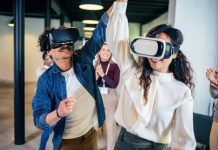It seems like we’re working harder and faster than ever. Yet why does it feel as though we’re not as productive as we should be? While there have been many initiatives aimed at increasing productivity—including the adoption of lots of technology—productivity has declined. Recent reports suggest the best way to improve productivity is to help people work smarter, not just harder, which requires giving employees meaningful development experiences. But in today’s fast-paced, “what have you done for me lately?” business environment, what I call the “Twitterization” of the workplace, it’s difficult to create meaningful learning experiences. In our Twitterized world, few companies are willing to devote the time and resources necessary for employees to work smarter, grow, and become more productive.
Is the decline in worker productivity simply a feeling or is it a real issue? According to a U.S. Bureau of Labor Statistics report, employee output per hour decreased at a 0.5 percent annualized rate in the three months through June 2016 after dropping 0.6 percent in the prior quarter. This was the third straight quarter of decline, which was a further decrease from the previous eight years of slow growth. To me, this is a result of living in a Twitterized world where everything is shortened to 140 characters, which means work is fragmented and learning suffers.
Let me give you an example of how this Twitterization is affecting how some companies believe they need to transform their business in response to rapid market changes. One company we worked with believes that implementing training programs is the only way to make tangible changes within the company. So I asked the executive what he considers the best type of training for his employees? His response shocked me.
He said all training had to be done through five- and 10-minute online courses that use PowerPoints and multiple choice tests. Even worse, he said that due to limited time, the company could only offer two such courses at a time. He was trying to make significant performance improvements in Twitter time—an impossible task using traditional approaches to learning.
This model goes right to the core of the problem when it comes to corporate philosophy about training, improving worker performance, and fostering an environment of development and growth. Twitterization causes micro-fragmentation of work and development, stripping meaning, and, therefore motivation, from both. In order to achieve the type of improvements necessary to run a successful business, companies need alternative approaches to work and development that can be effective within the constraints of Twitter time.
Leveraging Top Performers
Wouldn’t it be great if you could quickly clone your top performers? Until recently, the world hasn’t been able to do this. Reverse engineering top performers, and getting everyone else to think and act like these top performers, was difficult, time consuming, and ultimately mostly unsuccessful.
For those of you who are responsible for designing corporate training programs, one of the biggest challenges is capturing intrinsic or tacit knowledge from your company’s top star performers—their true “secret sauce.” Why is that? Typically, it’s because these people are unconsciously competent, meaning they don’t know what they know. If you were to ask them, “What makes you so special?” it’s my experience that they would simply say, “I’m not so special.” More important is that their knowledge is not just what they actually do, but how they think about issues and problem solve situations. The expert’s secret sauce is not readily apparent.
Fortunately, due to rapid advances in the neuroscience of learning and the development of technologies that leverage these advances, it is now possible to discover the top performers’ secret sauce and develop others to think and act like your best, all in Twitter time.
Strategies to Improve Employee Performance and Increase Productivity
Approximately 17 years ago, Cerebyte began developing a technique to efficiently gather experts’ tacit (i.e., unconscious) knowledge. This won recognition as one of the only approaches that could quickly and effectively elicit the expert’s true secret sauce. Approximately, 12 years ago, we began developing learning methodologies that guided non-experts to become clones of the experts. These techniques resulted in better than 90 percent of learners demonstrating the attitudes and behaviors of the star performers. Achieving this level of impact was itself a major breakthrough.
Fortunately, these advances in neuroscience suggest that certain images, particularly those focused on contributing to a greater social purpose and developing the mastery needed to achieve the purpose, are processed very rapidly. By guiding experts to think about themselves and their work in a particular way—we called this “self-discovery”—it became possible to define the secret sauce of expertise in as little as two hours. Think of it this way: There is a belief that it takes 10,000 hours to build expertise; now we could reverse engineer that expertise in two hours.
A similar process occurred for developing others to think and act like the top performers, which we call “self-directed learning.” By presenting the expert’s imagery and language in ways consistent with rapid neural processing, and providing a social learning environment where insights are easily shared with others, learners could absorb the expert’s conceptual framework in one hour and develop many of the desired attitudes and skills in as little as eight hours of practice.
In addition, because these methodologies are so efficient, they are quite low cost in terms of both dollars and demands on the organization, at least compared to almost any other learning methodologies and technologies.
The implications of these breakthroughs for learning and development organizations are staggering. Now it is possible to provide meaningful, scientifically based, purpose-driven development at low cost and high speed. Instead of spending good energy trying to convince organizations to invest in training—and getting shot down because of the time and budget pressures—it is now possible to improve productivity through great learning experience, all in Twitter time
William Seidman, Ph.D., is the CEO of Cerebyte, Inc., a company focused on creating high-performing organizational cultures. To learn more about Cerebyte’s UrSof Learning Platform, e-mail: William.seidman@cerebyte.com.




